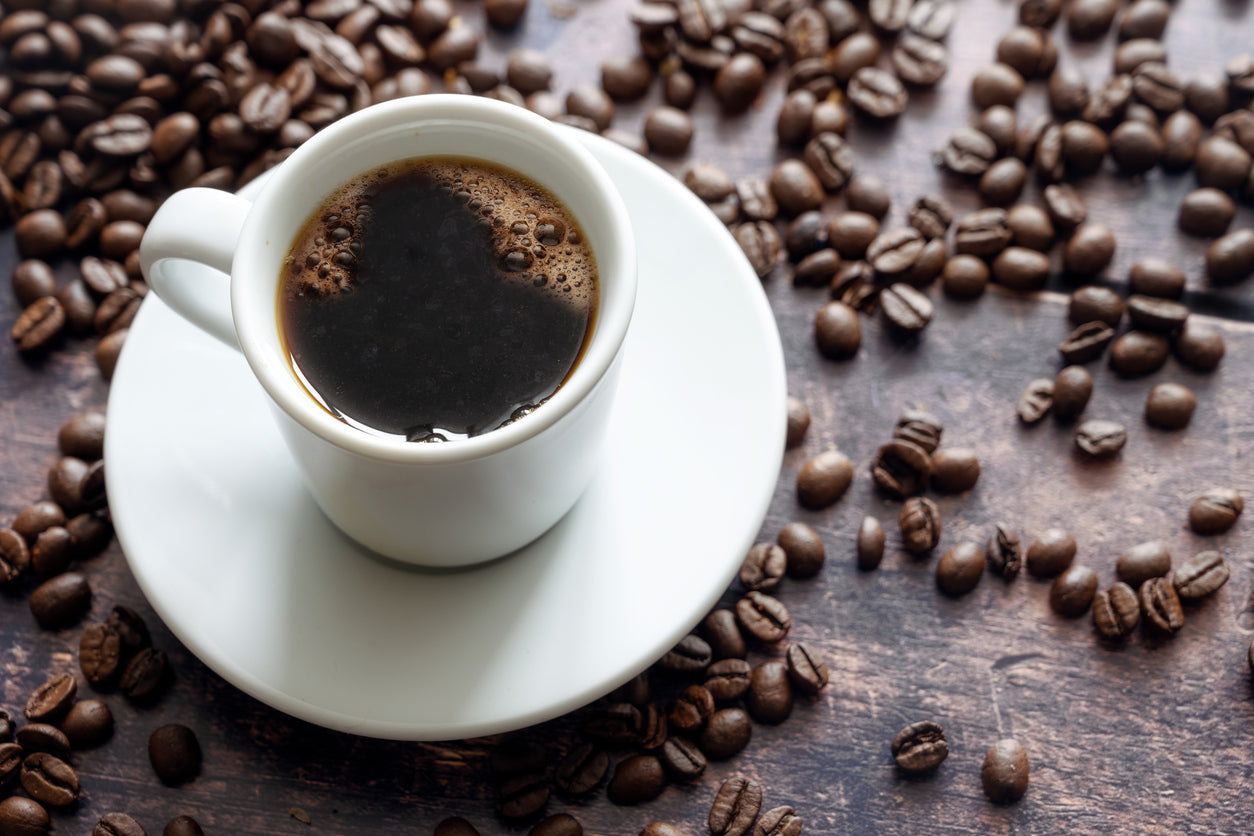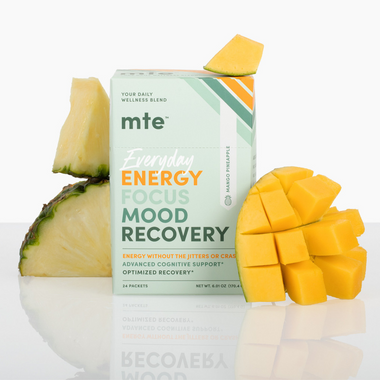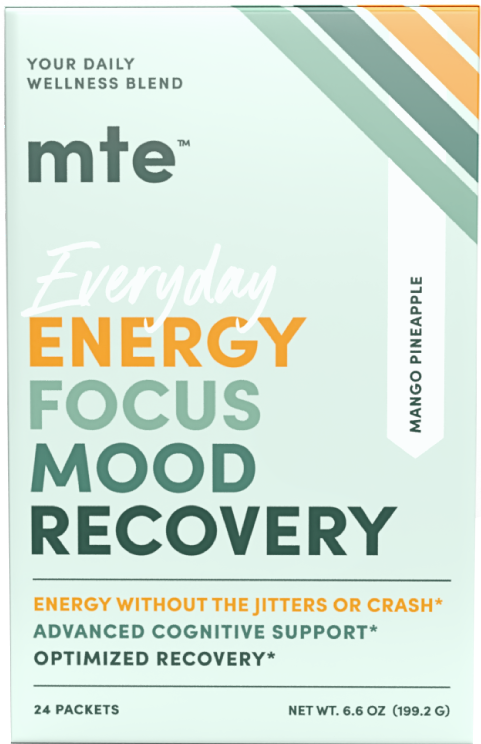
Understanding Caffeine’s Metabolites & How Paraxanthine Works
If you’ve read the MTE blog, like, at all, you’re definitely familiar with how caffeine acts on different neurochemical processes once you down that daily double espresso. That energy boost you feel is really just the result of caffeine triggering a false stress response, which is why the energy high often comes with jitters and irritability, and the low energy comes with exhaustion and more irritability. It’s a cycle of angst, she writes as she reaches across the desk for her coffee.
But in a plot twist, not all caffeine is bad. In fact, about 84% of it might be a transformative compound in the development of caffeine-free energy boosters that are a healthier energy drink alternative. The answer is in how caffeine is digested and separated into 3 major metabolites. Might one of these metabolites be solely responsible for the good things about caffeine?
What Are the Major Metabolites of Caffeine?
The natural energy boost caffeine provides, as well as its effect of mobilizing the metabolism (known as lipolysis), are what has made it the go-to in performance drinks. But the downsides are well-known and widely-experienced. This led researchers to look at what happens to cells when lipolysis is triggered in order to see if they could find a better approach to caffeine.
In 1990, during the course of this research, they noticed that it takes significantly more caffeine to trigger lipolysis in live cells that are part of an organism than it does in non-living, isolated cells in a lab. When ingested, caffeine is broken down into 3 main metabolites once it reaches the liver. Because complex organisms use metabolism digestion to break things down and then use the parts, scientists posited the answer to a natural caffeine alternative might be in its metabolites:
Paraxanthine
Paraxanthine is caffeine’s largest metabolite at 82-84%. It’s believed to be the metabolite that triggers lipolysis while blocking a neurochemical that signals to the brain I’M TIRED and encouraging signaling from a neurochemical that signals I’M AWAKE, resulting in an energy boost. Research indicates it outperforms caffeine but without the downsides caused by caffeine’s triggering of a stress response.
Theobromine
Theobromine accounts for about 12% of caffeine’s byproducts. It’s the main stimulant naturally found in cacao. It is a mild diuretic, and it also dilates blood vessels, increasing oxygen intake throughout the body. In the brain, it blocks the breakdown of a chemical largely responsible for healthy cell signaling, boosting focus and cognition.
Theophylline
Theophylline is the least of the caffeine metabolites at about 4%. It’s often used as a medication for respiratory illnesses, as it’s known to relax and dilate the airways by increasing signaling of that same I’M TIRED chemical to relax and smooth the muscles of the airways.
Can You Isolate Paraxanthine as an Alternative to Caffeine?
That 1990 research led to a small study where 10 healthy adult males were given caffeine via IV, and then their blood was monitored for levels of caffeine, paraxanthine and FFA, which is indicative of lipolysis. They discovered a very high positive correlation between paraxanthine and FFA, indicating it may be the thing driving the energy boost, not the caffeine itself.
What seems to happen as caffeine is metabolized is that the positive effects of paraxanthine you would be able to feel are overshadowed by all of caffeine’s sensory effects – the wakefulness, motivation, focus, etc. However, despite blocking I’M TIRED chemicals just like caffeine, paraxanthine doesn’t seem to trigger a false stress response, which is why if you remove the parent caffeine from the situation, you’re left with most (if not more) of the good of caffeine without the bad.
Research also indicates that consuming synthesized paraxanthine is safe for a wide array of people, including those sensitive to caffeine. Enfinity® currently has the market on isolated paraxanthine for energy and wellness drinks, powders and capsules. Their high-purity paraxanthine is quickly collecting a body of studies indicating that pretty much everything about it is better than caffeine:
What Are the Benefits of Paraxanthine vs Caffeine?
If what current research is indicating is, in fact, the reality of the situation, the paraxanthine vs caffeine question isn’t even a competition. Just take the side effects of caffeine: jitters, moodiness, tachycardia, crash and fatigue. Paraxanthine side effects? Like, none. In fact, studies on the safety of paraxanthine vs caffeine indicate it’s safer than caffeine and theophylline even at high doses, and doesn’t cause many of the toxic effects caffeine does.
A 2010 study tried to isolate the effects of caffeine from paraxanthine, including wakefulness, muscle activity and stress/anxiety in narcoleptic mice. Their results:
- Paraxanthine’s wakefulness effects were stronger than an equivalent dose of caffeine.
- Paraxanthine and caffeine wakefulness effects lasted 6-8 hours, but only caffeine caused a sleep rebound (read: the dreaded crash).
- Paraxanthine and caffeine both increased muscle activity and body temperature, but at high doses caffeine caused opposite, hypothermic effects that dampened muscle activity. Paraxanthine didn’t cause this adverse effect, even at high doses.
- Caffeine’s “sleep” rebound caused sedation but did not contribute to sleep.
- Caffeine increased anxiety during a focused task, but paraxanthine did not.
Interestingly, another result of this study indicated that paraxanthine is pharmacologically distinct from caffeine, as rats trained to identify caffeine did not cue with paraxanthine.
A 2024 study explored paraxanthine vs caffeine vs placebo effects on cognitive performance after physical exertion. Participants were split into 4 groups: placebo, half placebo/half paraxanthine, half placebo/half caffeine, and half paraxanthine/half caffeine. The study was designed to see if paraxanthine’s benefits are dependent or not on caffeine. Paraxanthine improved reaction time and decreased error better than caffeine, but didn’t cause the adverse side effects associated with stimulants, both in symptoms nor blood markers.
There are a bunch of additional studies supporting the findings of these two. Don’t worry; there’s a soon-to-come deep-dive article on paraxanthine that’ll likely cite an obscene amount of recent research. Look out for it.
Suffice to say, where caffeine fails, it looks like partially-digested caffeine shines. And while the research is still in its beginnings, study after study is pointing in the same direction: isolated paraxanthine creates the opportunity for a (kind-of) caffeine-free alternative to energy drinks and coffee – something safe that does all the things you want caffeine to do without all the crap you know will come with it.
Where to Find Caffeine-Free Wellness Drinks with Paraxanthine
Paraxanthine is still an exclusive product, synthesized by a single company using a proprietary method. It’s an industry secret – literally – and also because no one knows about it yet. Only companies really focused on developing the best healthy drinks for energy and focus are on the uptake. MTE is a wellness drink powder that utilizes this advanced approach to healthy energy, an evolution that led us to create our caffeine-free Everyday Blend. With 10 other mood-supporting, stress-fighting, naturally energy-boosting nootropics, adaptogens and superfoods, this paraxanthine-fueled energy drink has much More Than Energy to offer. Kick the caffeine – try this instead.






